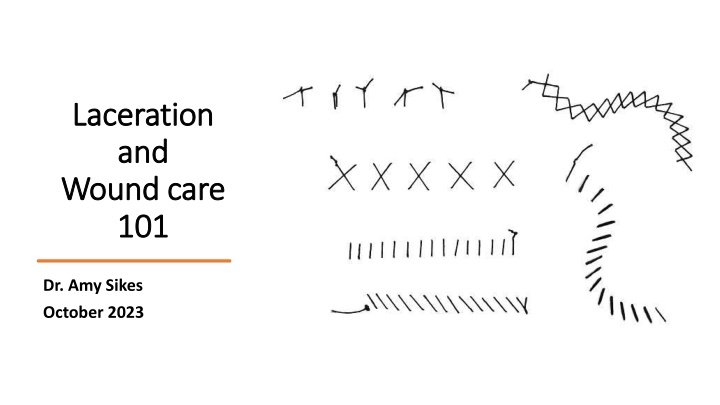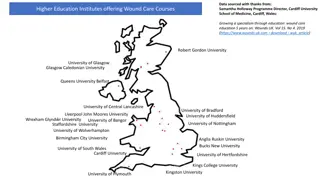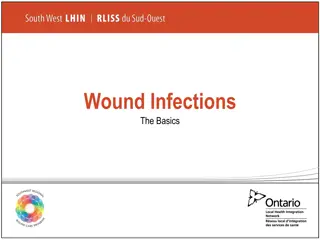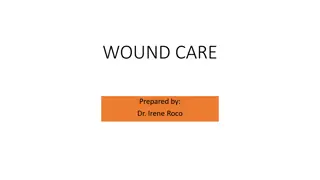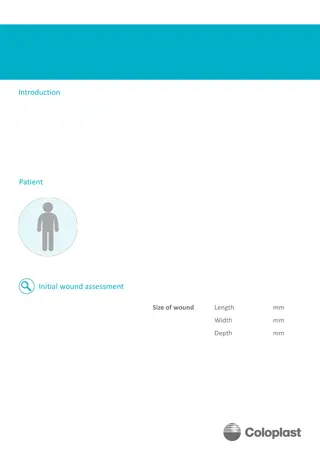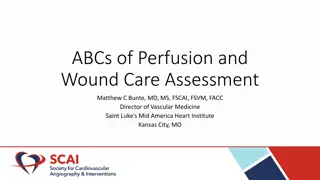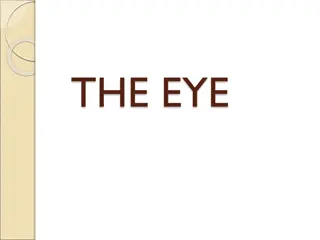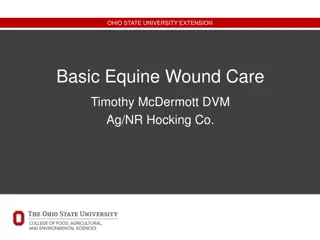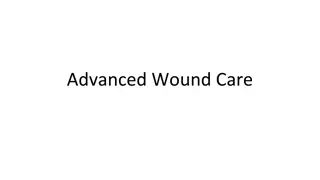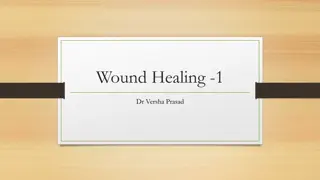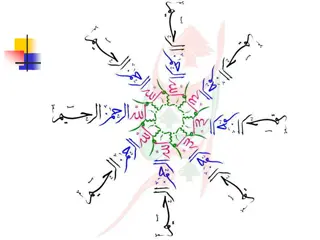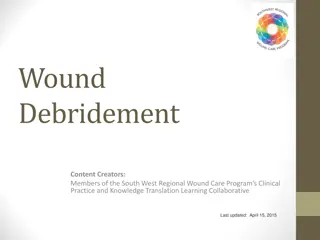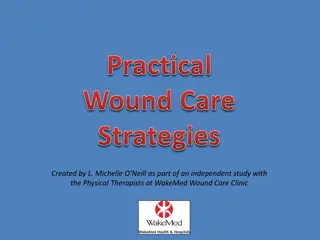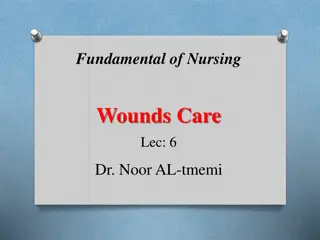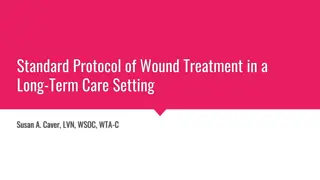Essential Wound Care and Laceration Repair Guidelines
This presentation highlights comprehensive wound evaluation, when to suture or refer for evaluation, wounds not suitable for suturing, and wounds healthcare providers should be able to manage. It covers the goals of laceration repair, tools for wound repair, and the importance of achieving hemostasis and optimal cosmetic outcomes while considering function and minimizing scarring.
Uploaded on Aug 04, 2024 | 0 Views
Download Presentation

Please find below an Image/Link to download the presentation.
The content on the website is provided AS IS for your information and personal use only. It may not be sold, licensed, or shared on other websites without obtaining consent from the author.If you encounter any issues during the download, it is possible that the publisher has removed the file from their server.
You are allowed to download the files provided on this website for personal or commercial use, subject to the condition that they are used lawfully. All files are the property of their respective owners.
The content on the website is provided AS IS for your information and personal use only. It may not be sold, licensed, or shared on other websites without obtaining consent from the author.
E N D
Presentation Transcript
Laceration Laceration and and Wound care Wound care 101 101 Dr. Amy Sikes October 2023
Wound evaluation for suture repair or referral to specialist Goals and Goals and Objectives Objectives Goal for laceration repair Timing for laceration/wound repair At the end of this presentation, At the end of this presentation, the learner should appreciate the learner should appreciate the following: the following: Tools for laceration/wound repair Wound Care and Follow-up
Wound Wound Evaluation Evaluation Mechanism and timing of injury Tetanus immunization status Foreign body present Extent of wound Review allergies Cosmetic significance
SHOULD I SEW OR SHOULD I SEW OR SHOULD THEY GO? SHOULD THEY GO? LACERATIONS FOR ER EVALUATION: Extensive or deep lacerations/puncture wounds/animal bites that involve muscle, tendon or fascia (including hands) Neurovascular compromise Fracture, amputation or joint involvement Severe contamination Area where there is significant tissue loss Lip lacerations that cross the vermillion border or facial lacerations to ensure optimal cosmetic outcomes Eyelid/orbital lacerations Some ear lacerations EVALUATION TO EVALUATION TO TREAT OR REFER TREAT OR REFER
Animal bites unless on face Human bites Lacerations older than 24 hrs (unless on face) Lacerations overlying infected tissue Deep puncture wounds Which Which wounds wounds should should NOT be sutured? be sutured? NOT
WOUNDS YOU SHOULD BE ABLE TO CARE FOR: Abrasions/Road Rash Skin tears Human/Animal bites Lacerations on: Face Trunk Extremities
What is the goal of laceration repair? What is the goal of laceration repair? Achieve hemostasis Avoid infection Restore function to the involved tissues Achieve optimal cosmetic results with minimal scarring
PRIMARY CLOSURE SUTURE, STAPLES, TISSUE ADHESIVE, ADHESIVE STRIPS 12-18 Hours caused by clean/sharp objects Up to 24 Hours Wounds of head and neck Laceration Laceration Repair Repair Timing Timing SECONDARY INTENTION Presenting after the times above Contaminated wounds Deep stab/puncture wounds Non-cosmetic animal bites
TOOLS OF TOOLS OF THE TRADE THE TRADE Suture appropriate for location (see handout) Lidocaine syringe, 18g needle to draw, 23g needle to infiltrate area Saline/Flushes 4x4 pads Needle Drivers Forceps Scissors
Wound has been evaluated Pain medication given Tdap given (if indicated) Digital, local or regional anesthetic Wound/laceration irrigated Wound explored It's SUTURE TIME what do I do? Time to Get it Time to Get it Done! Done!
Suture size? Suture size?
Technique Recommendations Simple Interrupted Tissue approximation; can be used for most wounds Simple Running LONG lacerations; all sutures lost if one is accidentally cut Horizontal Mattress Suture Everting wound edges; can cause necrosis/scarring Vertical Mattress Suture Most effective for everting wound edges; can cause necrosis/scarring Half-buried Mattress Suture Triangular wound edges FLAP repair Staples Fast; Unclean wounds; Avoid in cosmetic concern areas Adhesive Strips Fast, no anesthesia required; approximate simple/small lacerations low tensile areas with no bleeding Tissue Adhesive Fast, no anesthesia required; approximate small/ simple lacerations low tensile areas with no bleeding
PRACTICE PRACTICE PRACTICE How do I How do I know what know what to do? to do?
FOLLOW-UP Antibiotics Laceration/Suture care When to return for suture removal Discharge instructions Warning signs 1. Redness 2. Pus 3. Fever 4. Increased pain
Skin tears how do you treat these Bandaging and ointments Where is the best place to start in a laceration repair? Use of a stapler
Wound center treatment: Foot doctor Edison, NJ 08837 and South Amboy, NJ 08879. Wound Center Treatment | Foot Doctor Edison, NJ 08837 and South Amboy, NJ 08879. (n.d.). https://www.favorfootandwound.com/specialties/wound-center Laceration repair and sutures a cheat sheet guide. ALiEM Cards. (n.d.). https://aliemcards.com/cards/laceration-repair-suture- material/ Nice threads: a guide to suture choice in the ED - CanadiEM. (2015, February 5). CanadiEM. https://canadiem.org/nice- threads-guide-suture-choice-ed/ References References Forsch, R. T. (2017, May 15). Laceration Repair: A Practical approach. AAFP. https://www.aafp.org/pubs/afp/issues/2017/0515/p628.html Forsch, R. T. (2008, October 15). Essentials of skin laceration repair. AAFP. https://www.aafp.org/pubs/afp/issues/2008/1015/p945.html#follow -up-care-and-billing
